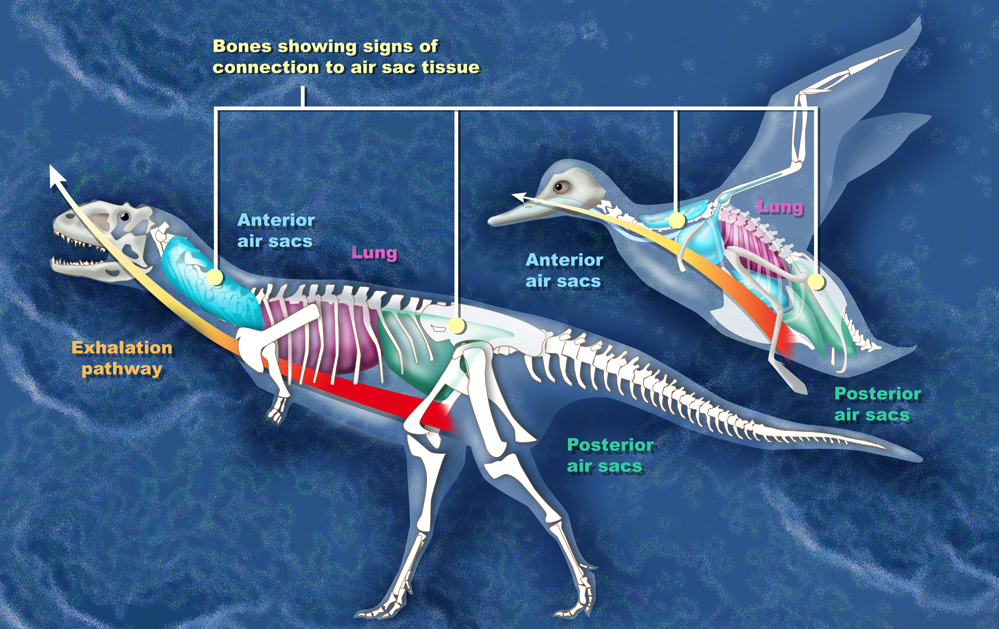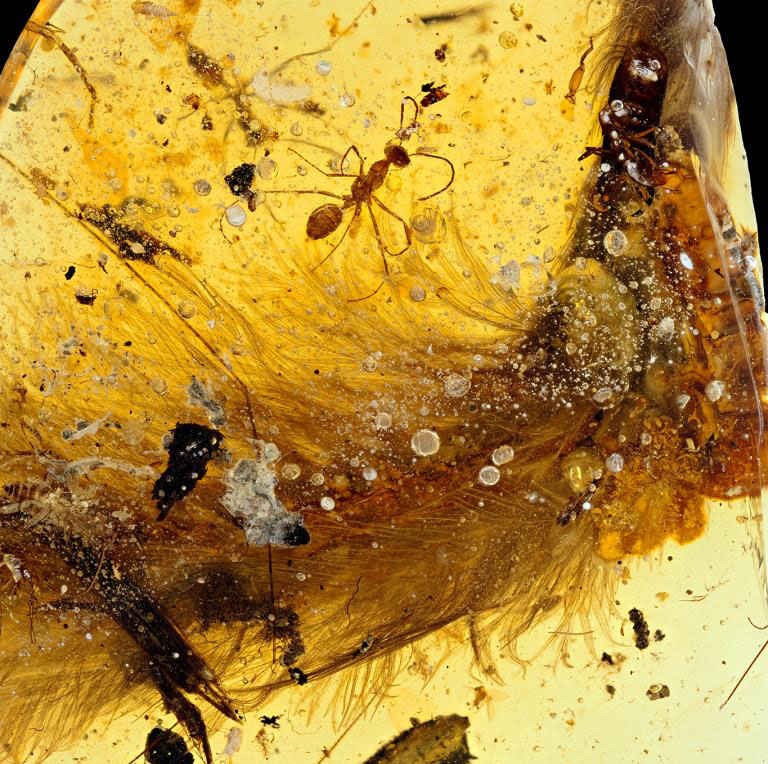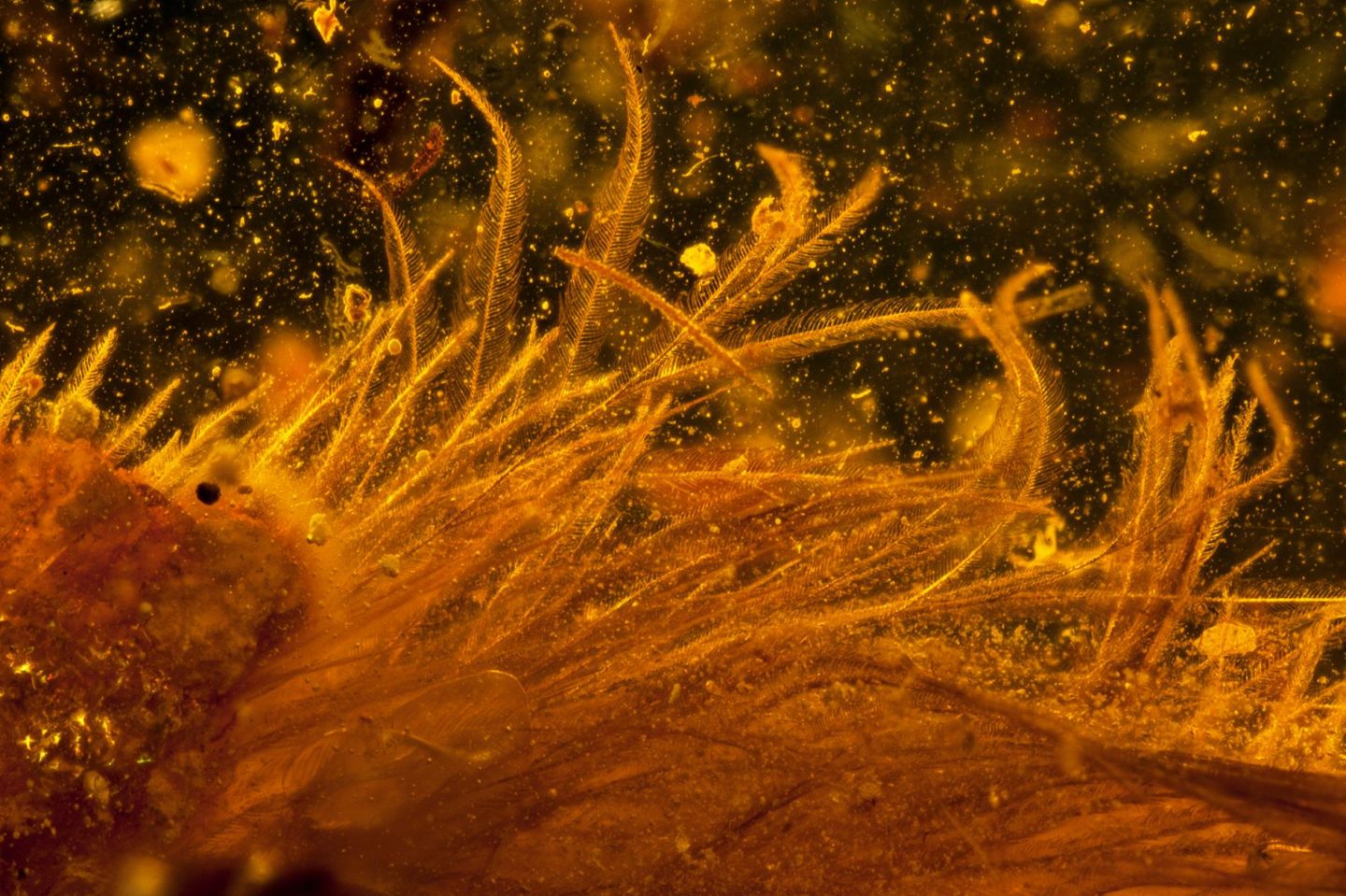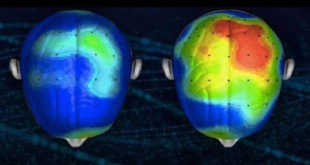Scientists are exited to have unearthed a piece of dinosaur tail from 99-million-years ago. According to a report published by the journal Current Biology, a piece of amber contained the tail fragment, bones, soft tissue, and even feathers.
The evidence for dinosaur-era feathers have been found in fossils and amber previously, but this time the piece of feather was well preserved and gives scientists the ability to directly connect feathers with a dinosaur. It also gives a chance for the scientists to better understand the evolutionary trait of dinosaurs.

The research, led by paleontologist Lida Xing of the China University of Geosciences, was funded in part by the National Geographic Society’s Expeditions Council. Scientists have always been curious to understand and determine the structure of evolution and this could prove that some dinosaurs had feather.
The semitranslucent amber sample is roughly the size and shape of a dried apricot and was unearthed from an amber mine in Hukawng Valley in Kachin state, northern Myanmar. The amber samples found from this region has always provided promising results and scientists are really curious about the creatures from the mid-Cretaceous period.

The amber sample found in Myanmar, has already been shaped into an oval by a jewelry maker. An ant can also be seen in the sample, which is also believed to be from the same period of time. The amber itself is small in size and within it contains 1.4-inch of delicate feathers.
The feather was sent to the lab and upon CT scans and microscopic analysis of the sample, it revealed eight vertebrae from the middle or end of a long, thin tail that may have been originally made up of more than 25 vertebrae.

The scan yielded results which scientists believe to have given them further insight into the structure of these pre-historic creatures. Based on the structure of the tail, they concluded that the tail belonged to a juvenile coelurosaur, part of a group of theropod dinosaurs that includes everything from tyrannosaurs to modern birds.
Before the excavation of this amber, Lida Xing and his research team has collected more than a dozen significant samples from Myitkyina. The dinosaur feather structure resembled the modern ornamental feathers and the way the tail was articulated made the researchers believe that the dinosaur could fly.
According to National Geographic,
“The dinosaur feathers feature a poorly defined central shaft (rachis) and appear to keel to either side of the tail. The open, flexible structure of the feathers is more similar to modern ornamental feathers than to flight feathers, which have well-defined central shafts, branches, sub-branches, and hooks that latch the structure together.”
The exposed surface of the feather allowed researchers to study the chemistry and find the presence of ferrous iron. Ferrous iron is a decomposition product from the blood hemoglobin that was once present in the dinosaur’s soft tissue.
“The fact that [the iron] is still present gives us a lot of hope for future analysis, to obtain other chemical information on things like pigmentation or even to identify parts of the original keratin,” says Ryan McKellar, curator of invertebrate paleontology at Canada’s Royal Saskatchewan Museum.”
Though the unearthed sample contains DNA from 99-million-years ago, it won’t lead to the creation of a real-life Jurassic Park, but could lead to a lot of other possibilities in the field of science.
This could provide scientists with more information and help us understand how evolution has changed since the dinosaurs. World has come so far with technology, and its always interesting to put the human innovations to learn more about what was in the past.
Sources: National Geographic, Ryan McKellar, Lida Xing, Current Biology, ROYAL SASKATCHEWAN MUSEUM.
Photo credits: Ryan McKellar, Lida Xing.
Our goal is to achieve accuracy and fairness. If you see an error or spot something that doesn’t look right, please feel free to Contact us!




